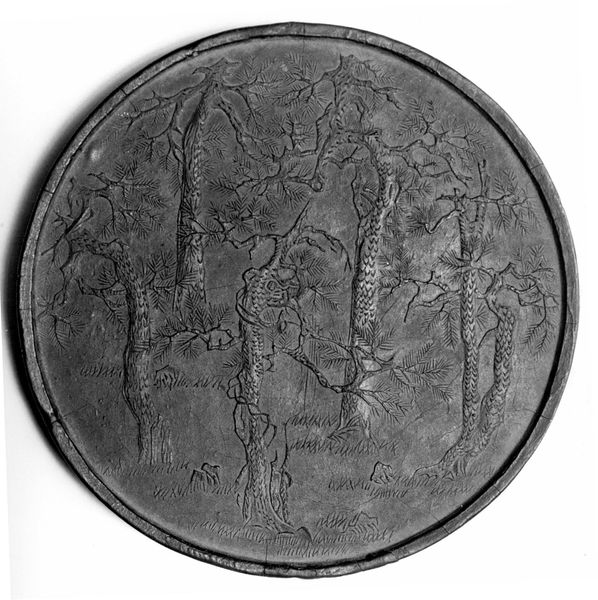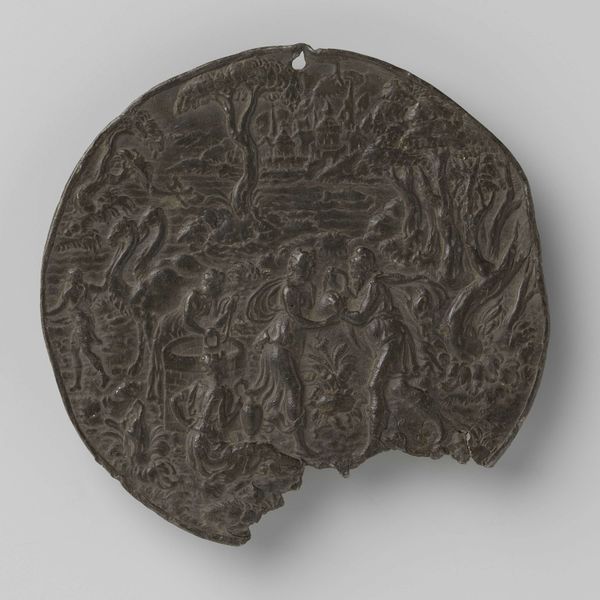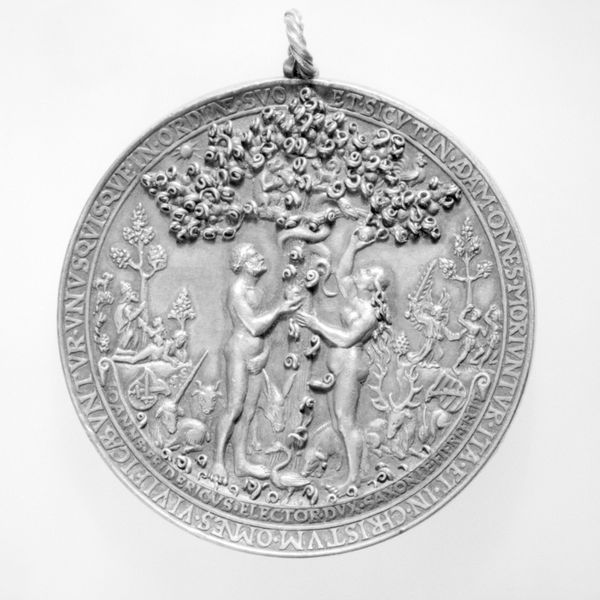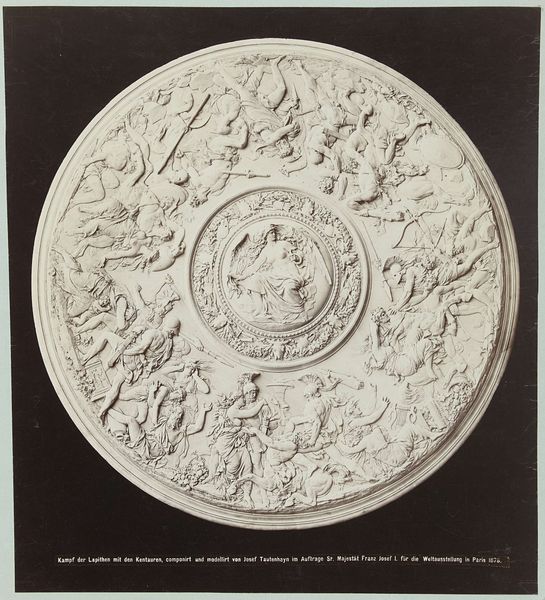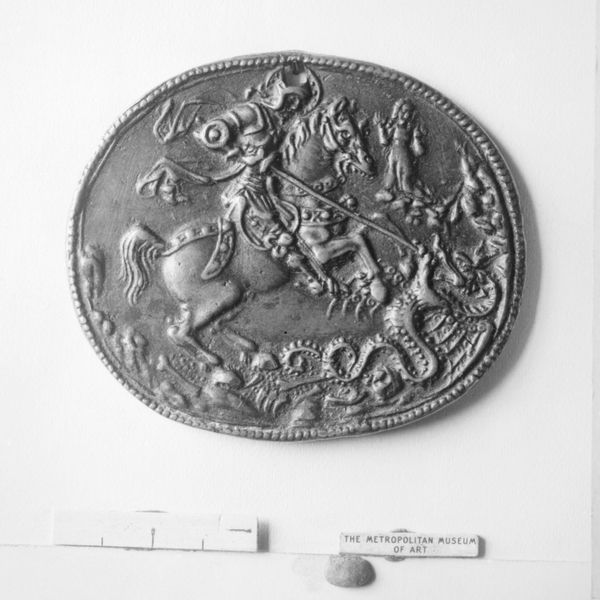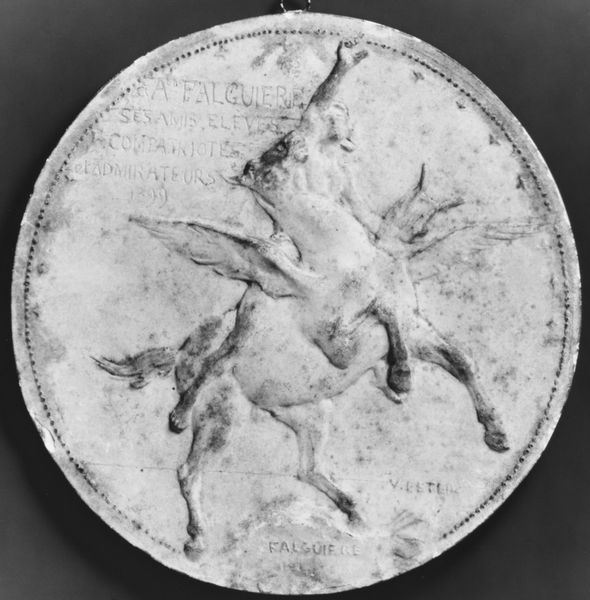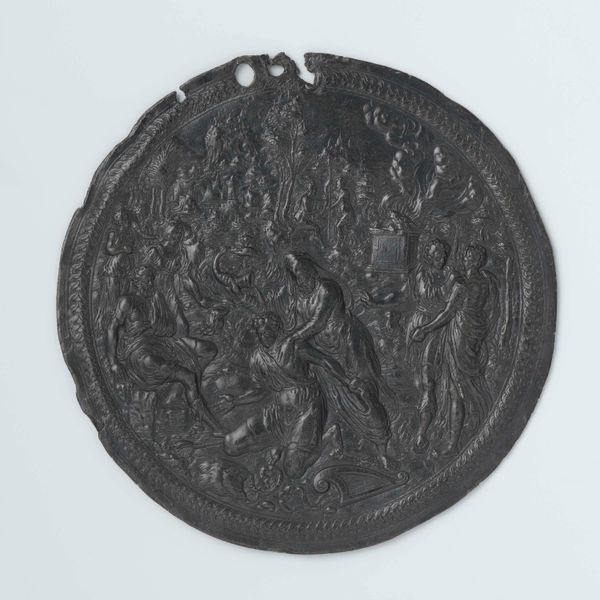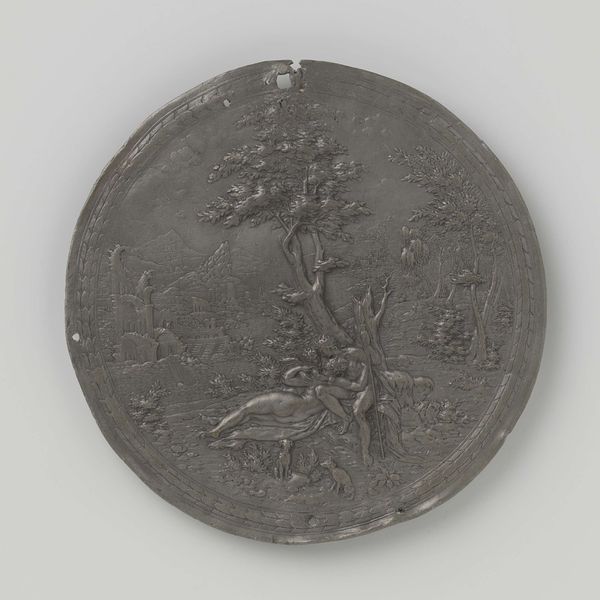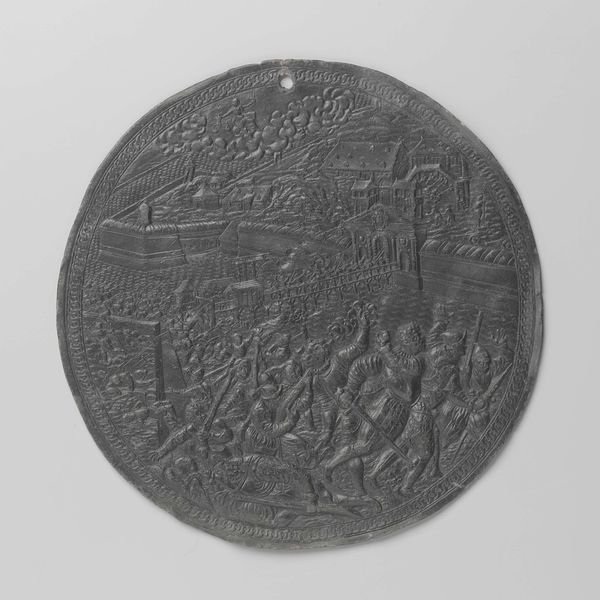
carving, relief, bronze, sculpture
#
medal
#
carving
#
relief
#
bronze
#
figuration
#
11_renaissance
#
sculpture
#
horse
#
carved
#
history-painting
#
tonal art
#
decorative-art
#
italian-renaissance
Dimensions: Diameter: 4 in. (10.2 cm)
Copyright: Public Domain
Curator: Galeazzo Mondella, also known as Moderno, rendered "The Fall of Phaeton" sometime between 1485 and 1515. It's a bronze relief sculpture currently held at the Metropolitan Museum of Art. Editor: Whoa. Immediate impression: chaotic beauty! It feels like looking into a vortex of muscular horses and panicked energy. Curator: Absolutely. The piece illustrates the dramatic climax of Phaeton's myth. Phaeton, son of Helios, disastrously attempts to drive his father's sun chariot across the sky. His lack of control leads to chaos, as we see here, with the horses wild, the chariot overturned, and Phaeton falling. Editor: The horses really grab me—the artist captured that raw, almost frantic energy. You can practically hear them screaming! And the way the figures overlap, the tangled limbs… it's like a visual representation of everything spinning out of control. Makes you wonder what it would be like to be trapped within. Curator: And that ties into the cultural anxieties of the Renaissance. The humanist movement, while celebrating human potential, also grappled with the consequences of unchecked ambition and hubris. Phaeton becomes a symbol of flawed leadership and the dangers of disrupting the natural order. The myth, and depictions like these, cautioned against exceeding divinely ordained boundaries. Editor: I dig that. It makes me think about responsibility, you know? About what happens when we take the reins, convinced we know better, and then… total meltdown! Sort of makes you chuckle uncomfortably, like, "Oh yeah, been there, burned the earth!" Plus, thinking of this as a medal or a personal object, it gives this intense historical scene an intimate feel. Makes one contemplate this scene from a perspective of potential ownership. Curator: Right. And considering Moderno's artistic output – often medals and small bronzes – this narrative becomes incredibly concentrated, lending a tangible and immediate resonance to Phaeton's fall from grace and how applicable it could be even to those with noble power at the time. The round shape encloses the drama, trapping the figures within its border and heightening that sense of inescapable destiny. Editor: It's got me pondering my own runaway chariot moments! It’s also just stunningly crafted. So much intensity packed into that small space. I keep seeing it in my mind's eye, the motion of the piece just stays with you. Curator: Exactly. Moderno masterfully translates a cautionary classical tale into a visceral Renaissance statement about human limitations.
Comments
No comments
Be the first to comment and join the conversation on the ultimate creative platform.

